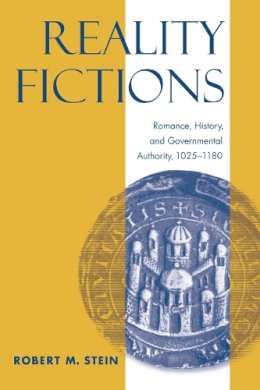
Reality Fictions: Romance, History, and Governmental Authority, 1025-1180
Robert M. Stein
It has long been a commonplace of literary history that in the twelfth century, first in the French-speaking territories controlled by the Anglo-Norman and Capetian ruling families, and especially within the milieu of the English royal court, antique and chivalric romances appear simultaneously with a new kind of historical chronicle driven by contemporary affairs. In short order, historiography and romance, whether written in Latin or in the vernaculars, became culturally dominant kinds of narrative expression throughout the rest of Europe.
Why did this happen? Why did these two new kinds of writing appear simultaneously and spread so rapidly within the same cultural milieu? In Reality Fictions, Robert M. Stein argues that the emergence of historiography and romance was linked to large-scale transformations in the structure of power attendant on Capetian and Anglo-Norman state-making. He maintains that an understanding of the changes in the twelfth-century literary constellation requires us to consider the structure of literary production as a whole and in its relation to the world from which it emerges and to which it responds. Stein argues that romance and history writing grew out of the same cultural need and were intended to perform the same cultural tasks, thus determining their simultaneous appearance, rapid development, and formal affinities.
In the rearrangements of power that were part of the state-making designs of Capetian and Anglo-Norman ruling families, new imaginative and conceptual entities became matters demanding serious representation, often in new discursive configurations, and often for the first time—the boundaries between self and other, the experience of eros, the differentiation of public from private life all took on new contours. A brilliant study of literary innovation, Reality Fictions provides a new understanding of the large variety of overlapping institutional, epistemological, and practical structures of power that the European Middle Ages presents to us and the ways that dislocations and transformations of power are registered in the consciousness of those who live through them.
Product Details
About Robert M. Stein
Reviews for Reality Fictions: Romance, History, and Governmental Authority, 1025-1180
